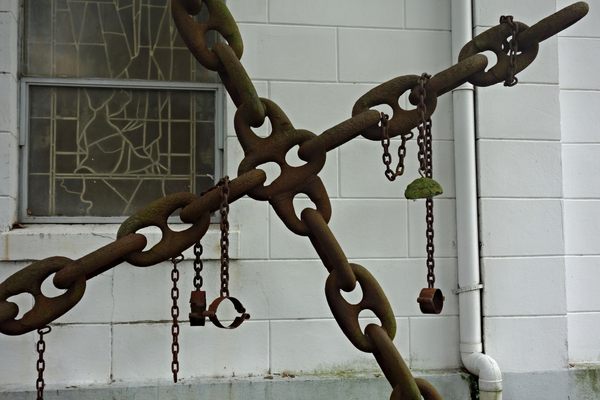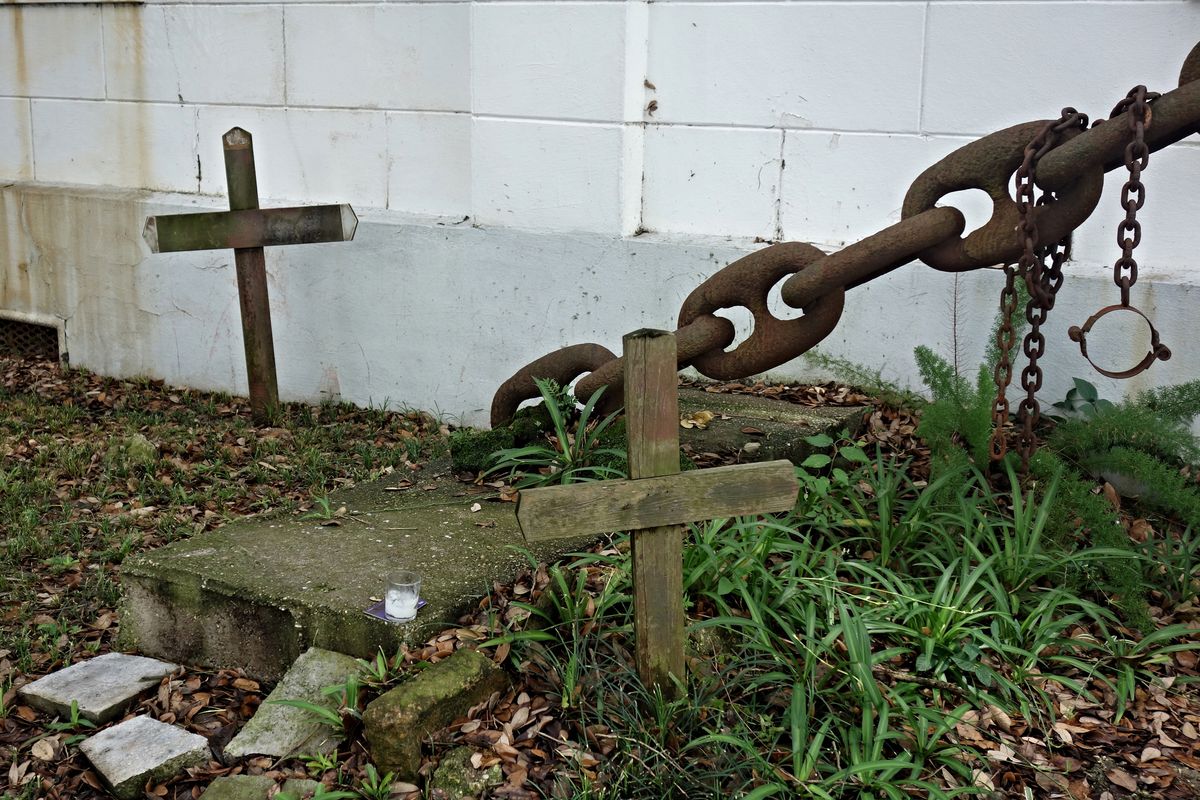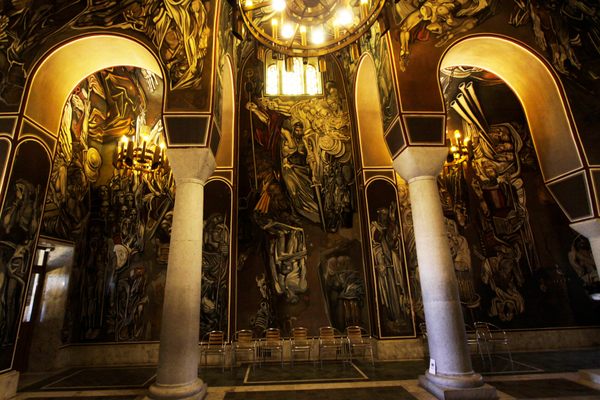About
Resting next to one of the walls of the St. Augustine Catholic Church of New Orleans is a rusting cross made of thick chains. Medieval metal shackles hang from the length of it, while smaller crosses are planted in the ground around their larger brethren. This is the Tomb of the Unknown Slave.
The demand for enslaved people in the European colonies of the Western Hemisphere greatly expanded the African slave trade. During its grimmest days, many of those enslaved people suffered violent, unnecessary deaths. These people were often buried unmourned and in unknown numbers. Many of their remains have been uncovered by modern construction efforts in the intervening years.
Installed in 2004, the grim, rusting monument standing outside the church honors those countless enslaved people who perished uncounted and unnamed. As the bronze plaque affixed to the wall behind the shrine explains, the monument was primarily inspired by the number of unmarked graves that have been unearthed in the city over the years, but is also dedicated to all of those who died during the American slave trade. During the early years of colonial rule, Central Africa lost as much as one-third of its population.
It is likely that there are such graves even in the earth beneath it since much of the parish was created by the labor of enslaved people. While no one is actually (officially) buried beneath, the cross is a constant and haunting reminder of the legacy of oppression that led to America's modern prosperity. It may not be the most uplifting memorial in the land, but it is most definitely nice to know that these poor souls are remembered, even without their names.
Related Tags
Community Contributors
Added By
Published
May 29, 2015
































